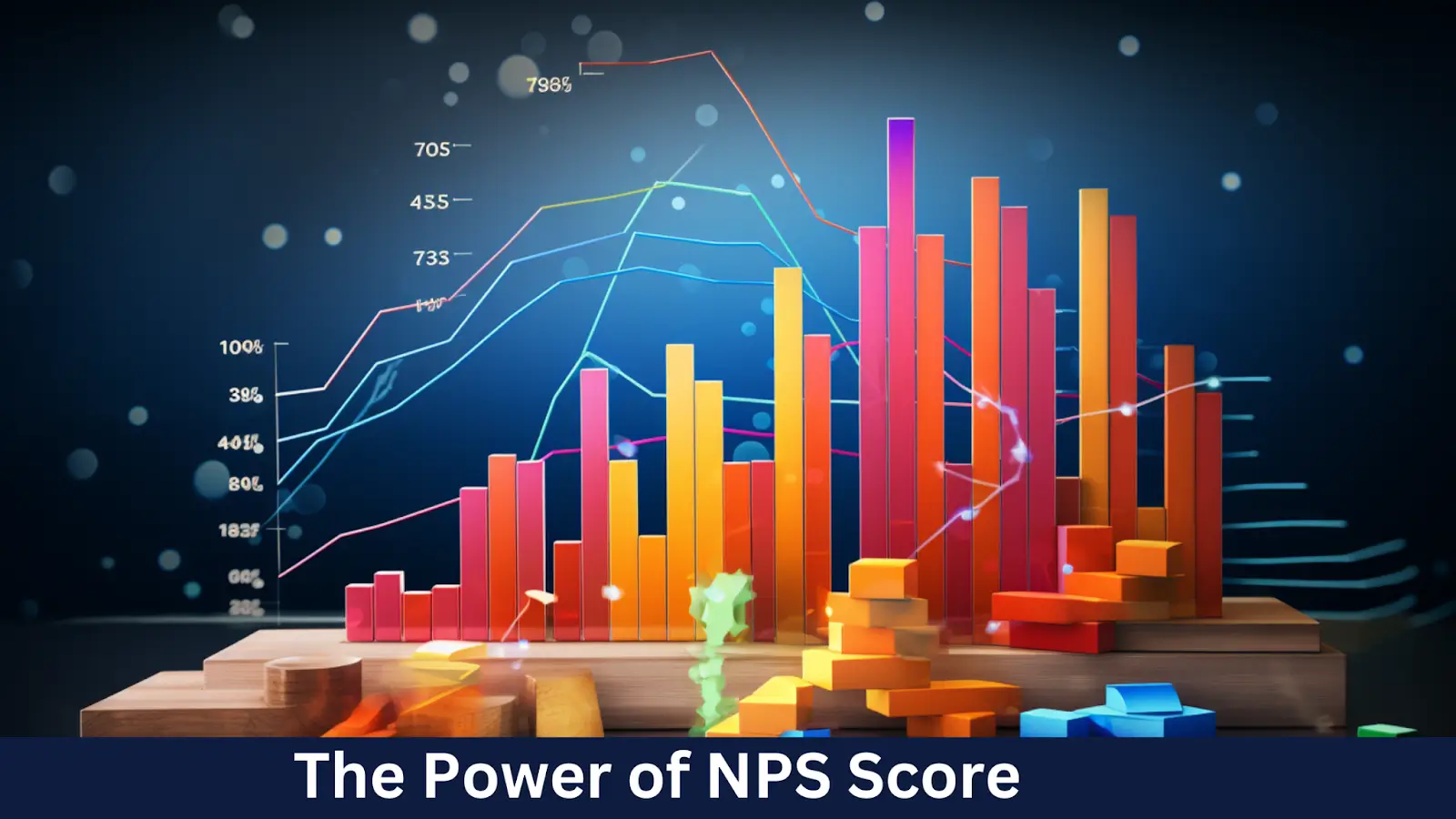
In the world of customer service and support, understanding and optimizing your Net Promoter Score (NPS) is essential.
This guide will take you through the ins and outs of NPS, helping you decipher its meaning, improve your score, overcome challenges, and harness its benefits.
We'll also explore how NPS impacts your call center's performance at financial, organizational, and agent levels.
Defining NPS Score
Net Promoter Score, often abbreviated as NPS, is a metric that measures customer loyalty and satisfaction. It provides valuable insights into how likely your customers are to recommend your products or services to others. NPS is calculated based on a single question: "On a scale of 0 to 10, how likely are you to recommend our company to a friend or colleague?"
- Promoters (Score 9-10): These are your loyal customers who are highly satisfied and likely to promote your business.
- Passives (Score 7-8): These customers are happy but not enthusiastic, and they might switch to competitors if given the chance.
- Detractors (Score 0-6): These customers are dissatisfied and could harm your reputation with negative word-of-mouth.

To calculate your NPS, subtract the percentage of detractors from the percentage of promoters. The resulting score can range from -100 to +100.
How is NPS calculated?
Net Promoter Score (NPS) is a metric used to gauge customer loyalty and satisfaction with a company or product. It is calculated by asking customers a single question: "On a scale of 0 to 10, how likely are you to recommend our product/service to a friend or colleague?" Based on their responses, customers are categorized into three groups:

To calculate the NPS, subtract the percentage of detractors from the percentage of promoters. The resulting score can range from -100 (if all respondents are detractors) to +100 (if all respondents are promoters). A higher NPS indicates better customer loyalty and satisfaction, making it a valuable metric for businesses to measure and improve their customer relationships.
Results first, payment later.
The Importance of NPS Score
Net Promoter Score (NPS) is more than just a metric; it's a powerful tool for businesses to gauge customer loyalty and satisfaction. Here's a detailed look at the importance of NPS, exploring various facets of its significance at 3 different Levels(Organizational, Agent, and Customer):
1. Organizational Level
- Customer-Centric Benchmarking: NPS provides a standardized method to assess and compare customer satisfaction across industries. It allows businesses to see where they stand in relation to their competitors, making it a valuable benchmarking tool.
- Early Warning System: NPS acts as an early warning system by highlighting detractors who are dissatisfied and at risk of churning. This allows companies to intervene and address issues before they escalate.
- Predictive Power: Studies have shown a strong correlation between NPS scores and business growth. A higher NPS score often corresponds to better financial performance and sustainable growth.
- Boosting Brand Reputation: A high NPS score can enhance your brand's reputation and credibility. It's a solid indicator to potential customers that your company values customer satisfaction.
- Guiding Resource Allocation: NPS insights can guide resource allocation. By identifying areas with the most significant room for improvement, businesses can allocate resources strategically to drive the most significant impact on customer satisfaction.
- Aligning Organizational Goals: NPS encourages alignment across different departments within an organization. It emphasizes a shared goal of delivering exceptional customer service and improving the customer experience.
- Data-Driven Decision-Making: NPS data empowers businesses to make informed decisions. Whether it's product enhancements, process improvements, or customer service adjustments, NPS data guides decision-makers with real customer insights.
2. Customer Level
- Simplicity and Ease of Understanding: The straightforward NPS question ("On a scale of 0 to 10, how likely are you to recommend our company to a friend or colleague?") is easy for customers to comprehend. This simplicity leads to higher survey response rates and more accurate feedback.
- Customer Loyalty Identification: By categorizing respondents as promoters, passives, or detractors based on their scores, NPS helps businesses identify loyal customers (promoters) who are more likely to make repeat purchases, refer others, and stay with the company over the long term.
- Customer Feedback for Improvement: NPS feedback provides a direct line to the customer's perspective. It serves as a roadmap for making data-driven improvements in products, services, and customer experiences.
- Enhancing Customer Retention: NPS helps in retaining customers, which is often more cost-effective than acquiring new ones. Satisfied customers tend to stay longer and spend more, contributing to revenue growth.
3. Agent Level
- Agent Performance Evaluation: For call centers and customer service teams, NPS provides a direct measure of agent performance. It can be used as a basis for training, coaching, and recognition.
- Employee Motivation: High NPS scores can boost employee morale. Agents and employees in customer-facing roles are motivated by positive feedback and recognition, which can lead to improved service quality.
- Actionable Feedback: NPS surveys not only capture a numeric score but also elicit open-ended comments from respondents. This qualitative feedback is invaluable for understanding the reasons behind customers' scores and for pinpointing areas that need improvement.
By understanding the NPS score and its meaning, organizations can harness the valuable data it provides to make strategic improvements across various aspects of their operations.
Having explored the significance of the Net Promoter Score (NPS) and its manifold benefits, it's essential to acknowledge that implementing and optimizing NPS in your organization is not without its challenges.
Challenges in Achieving Successful Implementation of NPS
Implementing a successful Net Promoter Score (NPS) program can be highly beneficial. Still, it also comes with its fair share of challenges. Here's an in-depth look at the challenges faced during the implementation of NPS:
1. Low Response Rates: Encouraging customers to participate in NPS surveys can be challenging. Low response rates can lead to incomplete or biased data, making it difficult to get an accurate representation of customer sentiment.
Solution: To address this challenge, keep surveys short and straightforward. Use multiple channels (email, SMS, phone calls) to reach customers and consider offering incentives to boost response rates.
2. Survey Fatigue: Customers today are bombarded with surveys from various companies. As a result, they may be hesitant to participate in yet another survey, leading to survey fatigue.
Solution: Be mindful of the frequency and timing of your NPS surveys. Avoid bombarding customers with surveys and ensure that each survey adds value by addressing specific customer experiences.
3. Accuracy of Data: Inaccurate or outdated customer data can skew NPS results. If your database contains incorrect contact information or if customers have multiple entries, it can be challenging to reach the right audience.
Solution: Regularly validate and update customer information to ensure data accuracy. Implement data cleansing processes to remove duplicate or irrelevant records.
4. Interpreting Open-Ended Feedback: While NPS surveys provide valuable open-ended feedback, analyzing and interpreting this qualitative data can be time-consuming and subjective.
Solution: Use natural language processing tools and sentiment analysis to categorize and analyze open-ended comments. This can help extract meaningful insights from the qualitative feedback.
5. Negative Feedback Handling: Dealing with detractors and their negative feedback can be emotionally challenging for employees and stakeholders. It requires a delicate balance of addressing concerns while maintaining professionalism.
Solution: Train your team, especially customer service agents, to handle negative feedback with empathy and a solution-oriented approach. Ensure that processes are in place to address issues promptly.
6. Resistance to Change: Implementing NPS may face resistance from within the organization, especially if it involves a shift in focus toward customer-centricity. Some employees may resist change due to fear or uncertainty.
Solution: Leadership buy-in and effective communication are vital to overcoming resistance. Clearly articulate the benefits of NPS and how it aligns with the organization's goals.
7. Integration Challenges: Integrating NPS into existing systems and workflows can be complex, particularly in large organizations with legacy systems. Inconsistent data capture and reporting can hinder the effectiveness of NPS.
Solution: Invest in technology and tools that facilitate seamless integration with CRM systems, customer databases, and other relevant platforms. Ensure that data flows smoothly between systems.
8. Scalability Issues: As your business grows, scaling your NPS program to handle a larger volume of customers can be a challenge. Maintaining consistency in data collection and analysis becomes crucial.
Solution: Plan for scalability from the outset. Automate processes where possible, and consider leveraging survey software that can handle a growing customer base efficiently.
9. Multi-Channel Engagement: Customers interact with businesses through various channels, including social media, email, phone, and in-person. Collecting NPS data across these diverse channels and aggregating it cohesively can be complex.
Solution: Implement omni-channel NPS strategies that capture feedback from all customer touchpoints. Use unified dashboards and analytics tools to consolidate data from different sources.
While implementing an NPS program offers valuable insights into customer satisfaction and loyalty, it is not without its challenges. However, with careful planning, the right strategies, and a commitment to addressing these challenges, organizations can successfully leverage NPS to improve their customer service and drive business growth.
It's essential to acknowledge that overcoming these obstacles is a pivotal step toward achieving success. With a clear understanding of these challenges and their solutions, businesses can now focus on strategies for improving their Net Promoter Score (NPS).
Improving the Organization's NPS Score
Improving your Net Promoter Score (NPS) requires a strategic approach aimed at enhancing customer satisfaction and loyalty. Here's an in-depth look at how to improve your NPS score, considering various aspects of the process:
1. Understand Your Baseline NPS Score: Before organizations can improve their NPS, organizations need to know where they stand. Calculate an organization’s current NPS score by sending out surveys to customers and collecting responses.
2. Analyze NPS Feedback Data: Dive deep into the feedback provided by customers along with their NPS scores. Look for common themes, pain points, and areas where you consistently receive negative feedback. This qualitative data is invaluable for making targeted improvements.
3. Identify Key Drivers: Identify the key factors that drive customer satisfaction and dissatisfaction within the industry and business. These can include product quality, customer service, pricing, or ease of use. Understanding what matters most to the organization’s customers will help the organization prioritize improvements.
4. Set Clear Goals: Define specific, measurable goals for organizations NPS improvement efforts. For example, “you might aim to increase your NPS score by 10 points within the next six months or reduce the percentage of detractors by a certain margin”.
5. Leverage Promoters: Promoters (customers who gave you a high NPS score, typically 9-10) are the organization’s most loyal advocates. Engage with them to encourage referrals and testimonials. Reward loyal customers with incentives or exclusive offers to further solidify their loyalty.
6. Address Passive Customers: Passives (those with NPS scores of 7-8) are somewhat satisfied but not enthusiastic about the brand. Focus on improving their experiences to turn them into promoters. Ask them for specific feedback on how an organization can enhance their satisfaction.
7. Streamline Customer Service: Invest in customer service training and resources. Ensure that the organization's customer service team is equipped to handle customer inquiries and issues promptly and effectively. A well-trained team can positively impact NPS scores.
8. Implement Feedback Loops: Create closed-loop feedback processes where the organization will follow up with customers who provided NPS scores and feedback. Show them that the organization values their input and is committed to addressing their concerns.
Improving an organization's NPS score is a multifaceted endeavor that involves understanding the organization’s customers' needs, addressing their problems, and continually striving for excellence in customer service and product quality.
After exploring how to improve an organization’s Net Promoter Score (NPS), let's delve into the significant impact that NPS can have on call center performance at various levels, from financial outcomes to organizational alignment and agent engagement.
How NPS Impacts Call Center Performance
In today's competitive business landscape, where customer satisfaction is paramount, the Net Promoter Score (NPS) has emerged as a game-changing metric for call centers. It's not just a number;
we will uncover how this metric influences financial success, organizational dynamics, and agent performance, making it an indispensable tool for achieving excellence in customer service.
1. Financial Impact
A high NPS score can positively affect your call center's financial performance in several ways:
- Increased Revenue: Loyal customers tend to spend more and make repeat purchases.
- Reduced Costs: Fewer customer complaints and issues mean lower operational costs.
- Higher Customer Lifetime Value: Retained customers contribute more to your bottom line over time.
2. Organizational Impact
At an organizational level, NPS can drive improvements and foster a customer-centric culture.
- Continuous Improvement: NPS feedback guides strategic decisions and process enhancements.
- Alignment: All departments align their efforts to enhance the customer experience.
- Employee Engagement: A focus on customer satisfaction can boost employee morale and motivation.
3. Agent-Level Impact
NPS also influences your call center agents' performance and job satisfaction.
- Feedback for Growth: Agents receive direct feedback on their interactions.
- Motivation: High NPS scores can boost agent morale and job satisfaction.
- Performance Recognition: Recognize and reward agents who consistently deliver exceptional service.
Suggested Read: How to Create a Call Center Agent Performance Scorecard?
Take the First Step to Success with Convin.
Convin's products offer innovative solutions that can greatly assist organizations in optimizing and successfully implementing their Net Promoter Score (NPS) initiatives. Here are several ways in which Convin can be beneficial:
1. Real-time Customer Feedback Analysis: Convin's AI-driven tools can analyze customer feedback in real time, enabling organizations to identify NPS trends and issues promptly.

2. Sentiment Analysis: The platform can perform sentiment analysis on customer comments, helping organizations understand the emotional context behind NPS scores and feedback.

3. Agent Training and Coaching: Convin can be used to analyze customer interactions, provide feedback to call center agents, and train them, helping them improve customer service skills and boost NPS scores.
4. Speech Analytics: Convin's speech analytics capabilities can be used to extract valuable insights from customer calls, identifying trends and areas for improvement in real-time conversations.
5. Data Security: Convin prioritizes data security and compliance, ensuring that NPS data is handled securely and in accordance with regulations.
By leveraging Convin's products, organizations can not only optimize their NPS processes but also implement data-driven strategies that lead to higher NPS scores, improved customer satisfaction, and, ultimately, business growth.
These recommendations can be the backbone of providing excellent customer service. Are you curious? Book a demo with us to learn more about how we tailor our services to your needs and help you take advantage of all these tips & tricks. We’re here to provide you with excellent advice, assistance, support, and resources - whatever it takes - to make sure your business focuses on improving its customer service strategy today and tomorrow.
FAQ
1. What is a good NPS Net Promoter Score?
A good Net Promoter Score (NPS) typically falls within the range of +50 to +70, indicating strong customer loyalty and positive word-of-mouth promotion.
2. How do I get my NPS score?
To get your NPS score, send out NPS surveys asking customers, "On a scale of 0-10, how likely are you to recommend our company to a friend or colleague?" Calculate your NPS by subtracting the percentage of detractors (0-6) from promoters (9-10).
3. What is a realistic NPS score?
A realistic NPS score varies by industry and competition but generally aims for positive numbers, with scores above 0 considered favorable.
4. What is a poor NPS score?
A poor NPS score is typically below 0, indicating a significant number of detractors and potential issues with customer satisfaction and loyalty.
5. Is the Net Promoter Score outdated?
While NPS remains widely used, some argue it's becoming outdated due to its simplicity and lack of context; many companies now complement it with other customer experience metrics for a more comprehensive view.































.webp)











